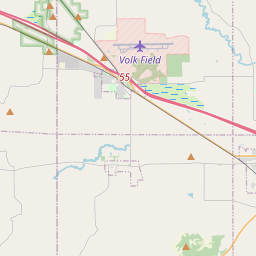New Lisbon Civil War Memorial
Historical marker location:






April 12, 1861: The Civil War begins with the Confederate attack on Fort Sumter, located in South Carolina's Charleston Harbor.
April 15, 1861: President Abraham Lincoln issues a call for 75,000 volunteers to serve in the Union Army to suppress the rebellion.
May 24, 1861: The first major land battle, known as the First Battle of Bull Run (or First Battle of Manassas), takes place in Virginia. It ends in Confederate victory.
September 17, 1862: The Battle of Antietam in Maryland becomes the bloodiest single-day battle in American history, with heavy casualties on both sides. The Union forces, commanded by General George McClellan, manage to halt Confederate General Robert E. Lee's advance into Union territory.
January 1, 1863: President Lincoln issues the Emancipation Proclamation, declaring that all slaves in Confederate-held territories are to be set free. However, the proclamation does not immediately free all slaves in the United States.
July 1-3, 1863: The Battle of Gettysburg in Pennsylvania takes place, resulting in a significant Union victory and inflicting heavy casualties on Confederate forces. It marks a turning point in the war.
November 19, 1863: President Lincoln delivers the Gettysburg Address, emphasizing the principles of liberty, equality, and the preservation of the Union.
April 9, 1865: General Robert E. Lee surrenders to Union General Ulysses S. Grant at Appomattox Court House in Virginia, effectively ending the Civil War.
April 14, 1865: President Lincoln is assassinated by John Wilkes Booth while attending a play at Ford's Theatre in Washington, D.C.
May 10, 1865: Confederate President Jefferson Davis is captured, signaling the collapse of the Confederate government.
December 6, 1865: The Thirteenth Amendment to the United States Constitution is ratified, officially abolishing slavery throughout the country.
While this timeline provides an overview of key events, it is important to note that the Civil War spanned over four years, from 1861 to 1865, and encompassed numerous battles, campaigns, and political developments that shaped the course of American history.
The first ever commercially successful typewriter, the Sholes and Glidden typewriter, was invented in Milwaukee in 1867.
In 1857, Juneau County was officially established, named in honor of Solomon Juneau, one of the early founders of the city of Milwaukee and a prominent figure in Wisconsin's early history. The county quickly became a center for logging, as vast forests covered the area. Timber was transported via the Wisconsin River, which played a crucial role in the county's economic development during this period.
As the logging industry declined in the late 19th century, agriculture took on a more significant role in Juneau County's economy. Dairy farming became a staple activity, as the area's fertile soil was well-suited for producing milk and cheese. The construction of rail lines in the late 19th and early 20th centuries further facilitated the transportation of agricultural products, solidifying the county's position as an agricultural hub.
In the present day, Juneau County remains primarily a rural area with a population that relies on agriculture, tourism, and small industries for its livelihood. The county is known for its natural beauty, boasting several lakes, rivers, and state parks that attract outdoor enthusiasts from around the region. With a history deeply rooted in logging and farming, Juneau County continues to honor its past while embracing the opportunities of the present.
Juneau County Timeline
This timeline provides a glimpse into the major events and milestones that have shaped the history of Juneau County, Wisconsin.
- 1836 - The Wisconsin Territory is established.
- 1857 - Juneau County is officially established by the Wisconsin Legislature.
- 1861-1865 - Juneau County residents fight in the American Civil War.
- 1864 - The village of New Lisbon is incorporated.
- 1865 - Camp Randall, a Civil War training camp, is established near present-day Camp Douglas.
- 1882 - The Wisconsin Central Railroad reaches Mauston, bringing increased transportation and economic opportunities.
- 1899 - The city of Mauston is officially incorporated.
- 1920s - Juneau County becomes a popular tourist destination, attracting visitors to its lakes, forests, and recreational opportunities.
- 1950s-1960s - The construction of Interstate 90/94 improves access to Juneau County and promotes further economic growth.
- 1985 - The Juneau County Historical Society is founded to preserve and promote the county's history.
- 2008 - The Necedah National Wildlife Refuge celebrates its 75th anniversary.
- 2010 - Juneau County's population reaches over 26,000 residents.